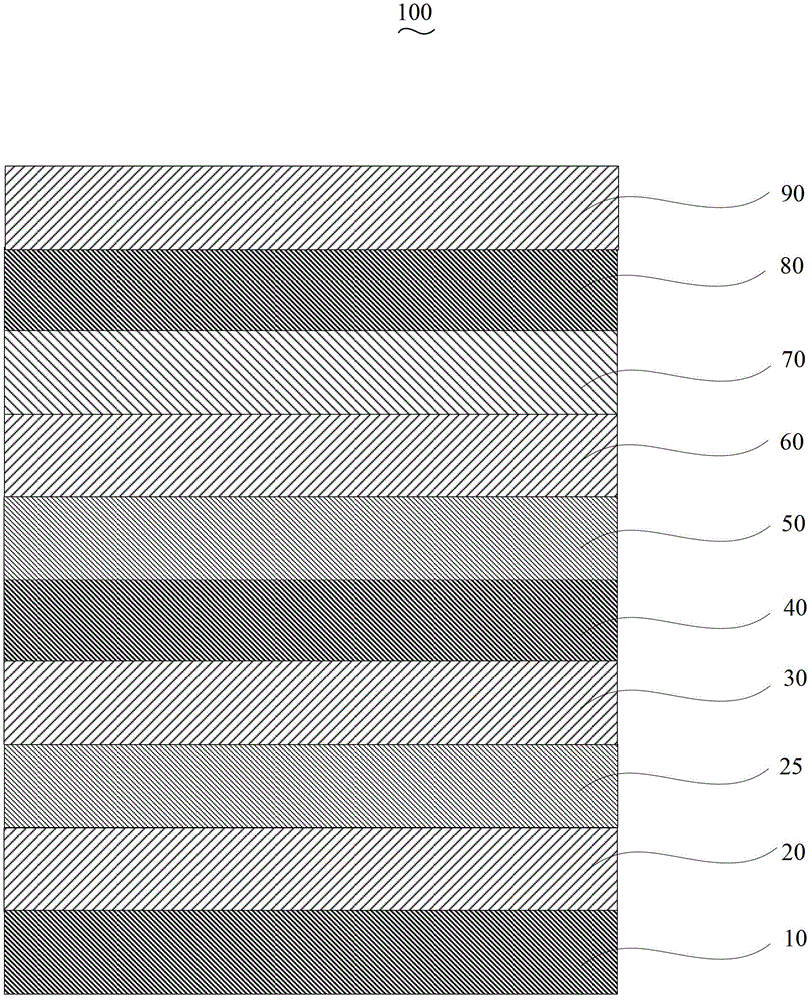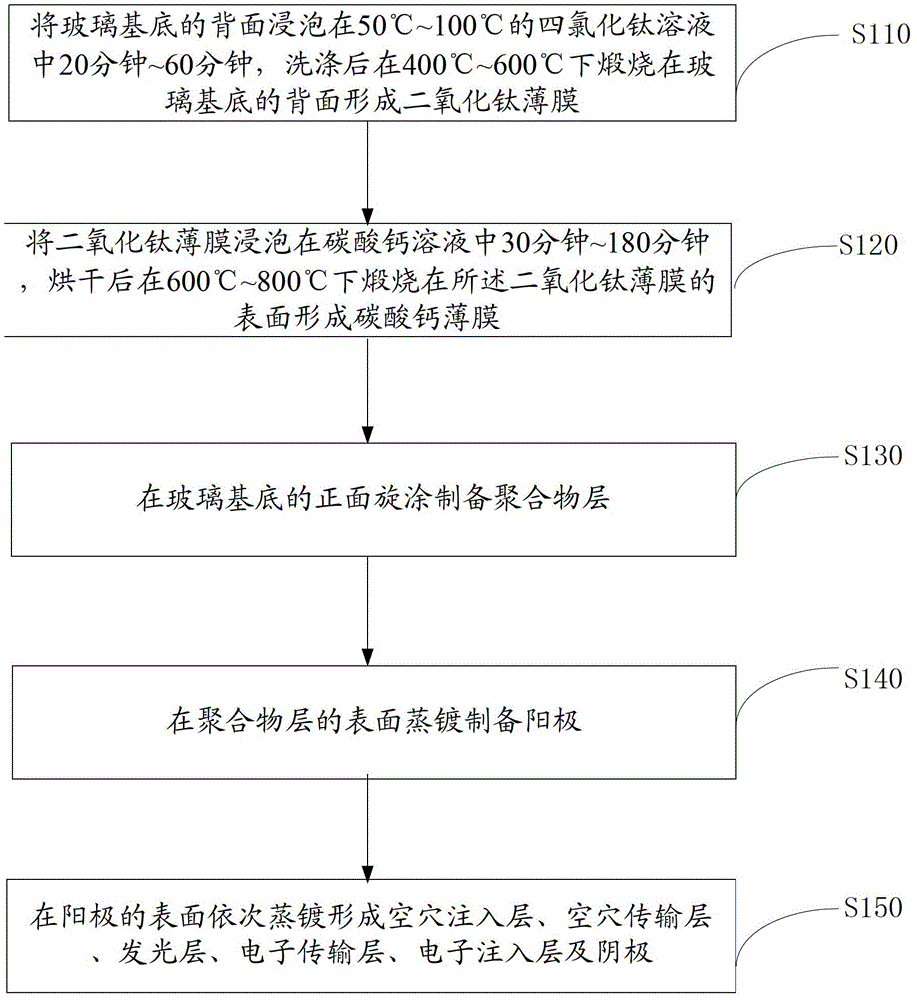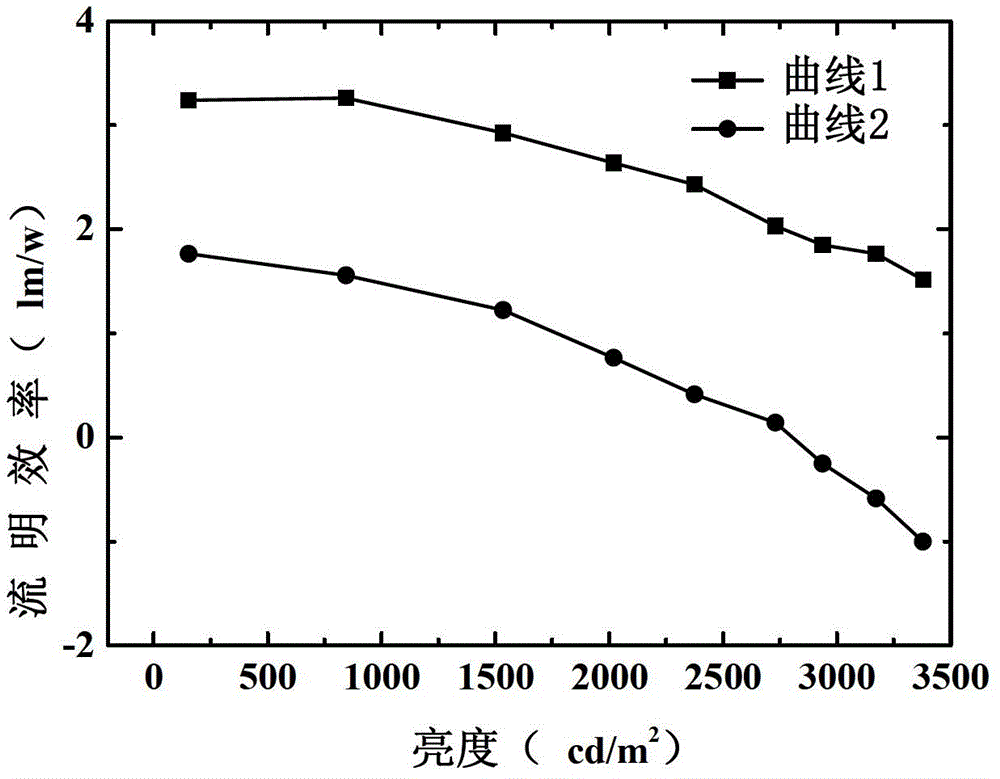Organic electroluminescent device and preparation method thereof
An electroluminescent device and luminescent technology, which is applied in the fields of electric solid-state devices, semiconductor/solid-state device manufacturing, electrical components, etc., can solve the problems of total reflection loss, poor refractive index, and low light extraction performance
- Summary
- Abstract
- Description
- Claims
- Application Information
AI Technical Summary
Problems solved by technology
Method used
Image
Examples
preparation example Construction
[0038] Please also see figure 2 , the preparation method of the organic electroluminescent device 100 of an embodiment, it comprises the following steps:
[0039] Step S110, immerse the back of the glass substrate 20 in a titanium tetrachloride solution at 50°C-100°C for 20-60 minutes, after washing, calcinate at 400-600°C to form a titanium dioxide film on the back of the glass substrate.
[0040] The glass substrate 20 is glass with a refractive index of 1.8-2.2, and the transmittance at 400 nm is higher than 90%. The glass substrate 20 is preferably glass with a grade of N-LAF36, N-LASF31A, N-LASF41A or N-LASF44. It should be noted that there is no substantial difference between the front and the back of the glass substrate 20 before being processed. In the present invention, in order to distinguish the two opposite surfaces of the glass substrate 20, the two surfaces are respectively referred to as the front and the back.
[0041] In this embodiment, the glass substrate...
Embodiment 1
[0066] The structure prepared in this example is CaCO 3 / TiO 2 / Glass Substrate / PEDOT:PSS / Ag / MoO 3 / NPB / Alq 3 / TAZ / Cs 2 CO 3 / Al organic electroluminescent devices.
[0067] The glass substrate is N-LASF44. After rinsing the glass substrate with distilled water and ethanol, soak it in isopropanol for one night. The glass substrate is first made of TiCl 4 Treatment: After rinsing the glass substrate with distilled water and ethanol, soak it in isopropanol for one night, and prepare TiCl with a concentration of 40mmol / L 4 In the aqueous solution, stir well, then tape the front of the glass substrate first, and then put the TiCl 4In the solution, keep warm at 70°C for 30min, take it out, rinse it with distilled water and absolute ethanol in turn, tear off the tape, and then calcinate at 500°C for 30min. Then a layer of titanium dioxide film was formed on the side not stuck to the tape, with a thickness of 2 μm. Then continue to stick to the side without titanium dioxide,...
Embodiment 2
[0072] The structure prepared in this example is CaCO 3 / TiO 2 / Glass Substrate / PEDOT:PSS / Al / V 2 o 5 / TCTA / ADN / Bphen / LiF / Pt organic electroluminescent devices.
[0073] The glass substrate is N-LAF36, rinse the glass with distilled water and ethanol, and soak it in isopropanol for one night. The glass substrate is first made of TiCl 4 Treatment: After rinsing the glass with distilled water and ethanol, soak it in isopropanol for one night, and prepare TiCl with a concentration of 20mmol / L 4 In the aqueous solution, stir well, then tape the front of the glass substrate first, and then put the TiCl 4 In the solution, keep warm at 50°C for 60min, take it out, rinse it with distilled water and absolute ethanol in turn, tear off the tape, and then calcinate at 600°C for 20min. Then a layer of titanium dioxide film was formed on the side not stuck to the tape with a thickness of 1 μm. Then continue to stick to the side without titanium dioxide, carry out calcium acetate treat...
PUM
| Property | Measurement | Unit |
|---|---|---|
| Thickness | aaaaa | aaaaa |
| Thickness | aaaaa | aaaaa |
| Thickness | aaaaa | aaaaa |
Abstract
Description
Claims
Application Information
 Login to View More
Login to View More - R&D
- Intellectual Property
- Life Sciences
- Materials
- Tech Scout
- Unparalleled Data Quality
- Higher Quality Content
- 60% Fewer Hallucinations
Browse by: Latest US Patents, China's latest patents, Technical Efficacy Thesaurus, Application Domain, Technology Topic, Popular Technical Reports.
© 2025 PatSnap. All rights reserved.Legal|Privacy policy|Modern Slavery Act Transparency Statement|Sitemap|About US| Contact US: help@patsnap.com



